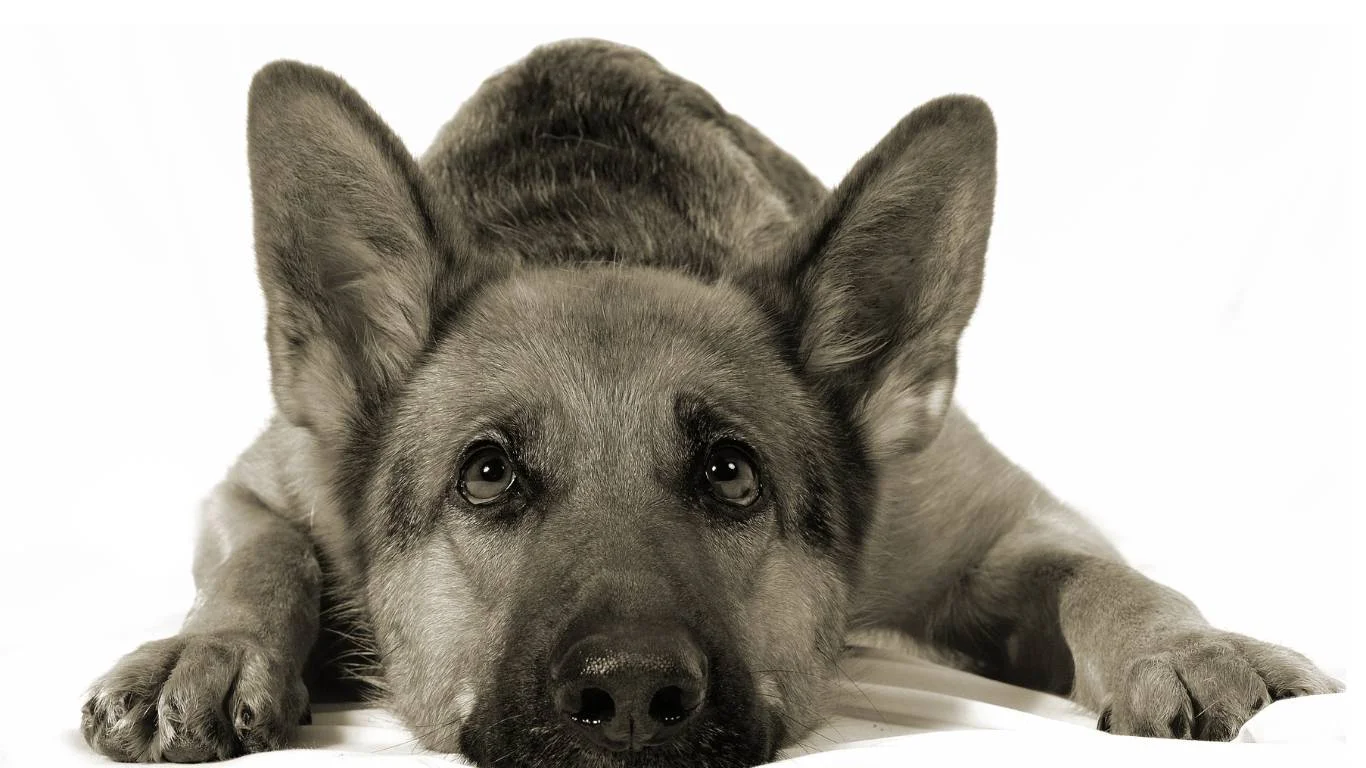How to Tell If a Dog Has Hearing Loss: Signs You Shouldn’t Ignore
If you’re wondering how to tell if a dog has hearing loss, you’re definitely not alone. As someone who’s spent years working as a veterinary assistant, especially with a focus on pet nutrition, I’ve had many pet parents come to me worried that their dog just isn’t responding like they used to. It can be scary, confusing, and honestly a little heartbreaking when your pup doesn’t react to your voice the way they once did. But hearing loss in dogs is more common than you might think—and spotting the early signs is key to helping them adapt and stay happy and healthy.
Is It Just Selective Hearing or Something More Serious?

We’ve all joked about dogs having “selective hearing”—especially when they ignore a command like “Come” but miraculously hear the crinkle of a treat bag from across the house. But when a normally responsive dog starts ignoring everyday sounds or commands, it could be a red flag. In my experience, pet parents often confuse age-related stubbornness with actual hearing issues.
Common Signs Your Dog Might Be Losing Their Hearing
Here’s what I usually tell clients to look for:
- No response to verbal cues like their name, even in a quiet room.
- Suddenly startling when touched—this happens when they don’t hear you coming.
- Lack of reaction to household sounds: doorbells, vacuum, other dogs barking, etc.
- Sleeping more deeply or failing to wake unless physically nudged.
- Barking excessively or inappropriately—dogs sometimes bark more when they can’t hear themselves properly.
I remember one senior Labrador who came in for a routine checkup, and his owner thought he was “just being old and lazy.” Turns out, he had significant hearing loss, and once they started using visual cues instead of voice commands, his whole personality perked back up.
Causes of Hearing Loss in Dogs

There are several reasons why a dog might start to lose their hearing. It’s not always just old age—although that’s a big one. I’ve seen dogs of all ages experience hearing issues due to things like ear infections or even wax buildup.
Some of the most common causes include:
- Age-related hearing loss (Presbycusis): This is the most common cause, especially in dogs over 10.
- Chronic ear infections: Long-term ear problems can damage the inner ear structures over time.
- Genetics: Certain breeds are more prone to deafness (Dalmatians, Australian Shepherds, and Boston Terriers, just to name a few).
- Exposure to loud noises: Dogs that spend a lot of time around fireworks, loud tools, or music can suffer damage similar to humans.
- Medication side effects: Some drugs, particularly certain antibiotics, can affect hearing as a side effect.
I’ve actually seen a young spaniel temporarily lose hearing after a particularly nasty double ear infection. Luckily, with quick treatment and ear care, she recovered well—but it’s a reminder of how important regular ear checks are.
How to Tell If a Dog Has Hearing Loss vs. Other Behavior Changes

One of the trickiest parts about diagnosing canine hearing loss is that it can look a lot like other issues—especially cognitive decline or simple aging. But there are a few things you can try at home before heading to the vet.
Try These Simple At-Home Hearing Tests
- Clap your hands or jingle your keys behind your dog while they’re facing away. No reaction? That’s a potential sign.
- Use squeaky toys out of their line of sight. Still no reaction? Might be worth a vet visit.
- Watch for visual cues: If they’re reacting only when they see your face or hands move, they may be relying on sight instead of sound.
In the clinic, we sometimes use more advanced methods like the BAER (Brainstem Auditory Evoked Response) test, but for everyday pet parents, these little tests at home can help you gauge whether it’s time to consult your vet.
In the next section, we’ll dig into how to adapt your home and communication style for a dog living with hearing loss—and why nutrition and overall wellness can still play a big part in supporting them.
Helping Your Dog Adjust to Life with Hearing Loss

Once you’ve figured out how to tell if a dog has hearing loss, the next step is figuring out how to support them as they adjust. And let me tell you, dogs are resilient. I’ve worked with so many pups who adapted beautifully to life without sound—and with just a few changes on your part, you can help your dog thrive too.
One of my favorite stories involves a sweet, floppy-eared Beagle named Max. His hearing started to fade around age 9, but with some creativity from his owner (and a few tips from us at the clinic), Max was soon responding to hand signals like a pro and enjoying life just as much as ever.
Simple Changes That Make a Big Difference
- Use visual cues: Hand signals, flashlight blinks, or even simple gestures like a thumbs-up can be surprisingly effective.
- Stomp gently: Some owners stomp lightly on the floor to get their dog’s attention—dogs can feel the vibrations.
- Stick to routines: Dogs with hearing loss find comfort in consistency. Try to keep feeding, walking, and bedtime schedules steady.
- Approach carefully: Always approach from the front or side so you don’t startle them. I always recommend turning on a light or tapping the floor before waking a sleeping pup with hearing issues.
Consistency and patience are your best friends here. One client used a tiny flashlight to signal when it was time to go out for potty breaks, and after just a week or two, her dog had it completely figured out.
Training a Dog with Hearing Loss

Now, training a dog with hearing loss isn’t as hard as it might sound. Honestly, a lot of pet parents are surprised by how quickly their dog picks up on hand signals. It’s just a matter of switching from vocal cues to visual ones. If your dog already knows basic commands, try pairing those same commands with a unique gesture for each one.
Tips for Visual Training
- Pick simple, consistent gestures: Don’t overcomplicate it—open palm for “stay,” point to the ground for “sit,” and so on.
- Use treats and praise: Just like any other training, positive reinforcement is key. I always keep a pouch of high-value treats on me during sessions.
- Practice in low-distraction areas: Make it easy for your dog to focus, especially at the start.
- Be patient: Some dogs take longer to adjust to this new way of communicating—and that’s okay.
There was one Golden Retriever I worked with—her name was Daisy—and her owner trained her entirely with hand signals after she lost her hearing at age 12. By the end of our sessions, Daisy could sit, stay, shake, and even roll over without a single word spoken. Dogs really are amazing when given the right support.
Why Nutrition Still Matters for Hearing Health

Okay, so here’s something that’s often overlooked: even if your dog has already lost some hearing, proper nutrition can still play a big role in their overall health—including their brain and nerve function, which affects hearing too. Since my background includes a focus on nutrition, this is a topic I get really passionate about.
Feed the Brain, Support the Senses
Here’s the thing—your dog’s ears don’t function in isolation. The nerves, brain, and inner ear structures are all interconnected, and they rely on proper nutrients to stay healthy. That’s why I always recommend focusing on foods and supplements that support neurological and cellular health.
- Omega-3 fatty acids: These support cognitive function and reduce inflammation. Think fish oils or high-quality salmon-based diets.
- Antioxidants: Blueberries, spinach, and sweet potatoes are great sources and help fight cellular aging.
- Vitamin E and C: Help with overall immune and tissue health, including the delicate cells inside the ear.
- B vitamins: Especially B12, which plays a role in nerve health. I’ve seen marked improvement in energy and alertness when B-complex supplements are added.
Of course, talk to your vet before making any big dietary changes or starting new supplements, but the bottom line is: nutrition matters. I’ve seen sluggish senior dogs perk up and engage more just from small tweaks in their diet.
Next up, we’ll dive into how to keep your dog safe at home and outdoors now that their sense of hearing isn’t what it used to be—because safety definitely takes a front seat when your dog can’t hear cars, people, or even you calling their name anymore.
Keeping a Hearing-Impaired Dog Safe at Home and Outdoors

So now that you’ve figured out how to tell if a dog has hearing loss and how to support them through diet, training, and communication changes, let’s talk about something that’s just as crucial—safety. Whether you’re at home, in your backyard, or out on walks, a dog with limited or no hearing has to rely more on their other senses (and on you) to stay safe.
I’ve had clients come in absolutely panicked because their dog bolted across the yard and didn’t stop when they yelled. That’s the tough part—dogs with hearing loss don’t hear traffic, other dogs, or your voice calling them back. It can be risky if you’re not ready for it.
Home Safety Tips for Dogs With Hearing Loss
- Use gates or barriers: If your home opens to a busy street, block off escape routes. Hearing-impaired dogs are more likely to wander without realizing danger is nearby.
- Leave lights on: If your dog is alone for extended periods, consider leaving a light on or using motion-activated night lights so they aren’t startled by sudden movements in the dark.
- Floor vibrations: I’ve seen families use mats with vibrating alerts connected to doorbells or alarms so the dog gets a tactile signal.
Outdoor Safety for Deaf Dogs
Whenever you’re outside, extra caution is a must. I always recommend using a harness and leash at all times—even in areas where other dogs might go off-leash. I know it might feel restrictive, but it’s better than risking an accident.
- Bright colored gear: I love those neon vests or collars that say “Deaf Dog.” It gives people a heads-up and can prevent unwanted surprises or misunderstandings during walks.
- Use a long lead: Gives them some freedom to explore safely while staying under your control.
- Teach recall with visual signals: A hand wave, flashlight blink, or a flag works wonders if practiced consistently. One of my clients used a bright red flag as a recall cue for her deaf Border Collie, and it worked beautifully after some training sessions.
Building a Stronger Bond Through Trust and Routine

It’s funny how a challenge like hearing loss can end up making the bond between you and your dog even stronger. I’ve witnessed this so many times in the clinic—owners start paying more attention to their dog’s body language, facial expressions, and energy levels, and in return, dogs start looking to their humans for guidance and reassurance.
Dogs are masters of adaptation, especially when they know they’re loved and supported. I can’t count how many pet parents have told me that their dog’s hearing loss actually made them more in tune with each other than ever before.
Daily Habits That Build Confidence
- Keep things positive: Lots of praise, treats, belly rubs, and calm energy help a dog feel secure, even when they’re unsure.
- Stay patient: Especially with older dogs. Learning new ways to interact takes time for both of you.
- Keep talking: Even if they can’t hear you. Your voice still provides a comforting presence, and many dogs respond to facial expressions and tone.
Don’t underestimate the power of routine, either. Regular walks, feeding times, bedtime rituals—these simple, consistent actions give a dog with hearing loss something to rely on. I once had a senior Shih Tzu patient who couldn’t hear a thing, but she always started wagging her tail when her owner clinked her food bowl against the countertop. It was pure muscle memory—and it worked.
References
Disclaimer
This content is for informational purposes only and is not intended to replace professional veterinary advice. Always consult your veterinarian for specific concerns related to your pet’s health, behavior, or treatment options.






